“Buritica is the flagship mining project for Colombia,” says Mateo Restrepo, president of Continental Gold (TSX: CNL; US-OTC: CGOOF). The project is more important here than it might be almost anywhere else.
“It will be the first large-scale, mechanized gold mine in the country, with high international operating standards,” he says. “We will double Colombia’s legal gold production and begin production in the short-term.”
Restrepo, who hails from the regional capital of Medellin, 70 km southeast of the project, emphasizes that for Colombia, Buritica represents much more than minerals.
“Colombia is in a post-conflict scenario,” he says. Violence and insecurity related to political groups, drug trafficking and illegal mining plagued South America’s second most populous nation for decades, until very recently.
In 2016, the government reached a peace agreement with FARC, the largest armed political faction, increasing security and stability in much of the country.
“The state needs to establish and maintain a presence in areas that were previously controlled by outlaws and armed groups,” he says. As such, the authorities see Continental’s flagship project as a strategic development to help keep Colombia’s hard-won peace and deliver prosperity to rural communities.

An aerial view of the Veta Sur tunnel under development at Continental Gold’s Buritica gold project in Colombia. Photo by David Perri
Buritica is one of dozens of projects across the infrastructure spectrum that the government has designated as strategically important, including several greenfield mineral projects. Buritica is the only one under construction, Restrepo says. Success here could serve as a symbol for an increasingly stable and secure Colombia.
The project also stands out for its scale, ranking as the eighth largest gold find in the past decade, according to S&P Global Market Intelligence. Mineable resources stand at more than 9 million oz. gold across all categories, which have been defined in two vein systems since the 2008 discovery.
In the years after Continental’s discovery, the property attracted thousands of illegal miners, many of whom were linked to organized crime. The unsanctioned operations continued until the government intervened in early 2016, as part of a nationwide effort to close illegal mining operations and formalize qualifying artisanal miners.
“We identified those real miners — local, traditional, not influenced by illegality — and teamed up with them,” says Restrepo, who was promoted to president a month before the government’s intervention at Buritica. “We now have 10 mining associations with 275 artisanal miners — some are working close to our existing tunnels. We have permanent coordination with them.”
“We process their ore, and we also support them completely, with mine planning and all other aspects of the business.”

Workers in the Yaragua tunnel at Buritica. Photo by David Perri
Continental has operated the small Yaragua gold mine and gravity flotation cyanide circuit at Buritica since it acquired the property in 2007. From 2012 to 2017, it milled 44,000 tonnes of ore, extracting 32,000 oz. gold (24.93 grams per tonne) and 31,000 oz. silver (48.17 grams per tonne).
The company has built 33% of the US$389-million underground mine outlined in its 2016 feasibility study. Upon completion, Continental will mine defined reserves in the Yaragua and Veta Sur vein systems totalling 3.7 million oz. gold and 10.7 million oz. silver, hosted in 13.7 million tonnes grading 8.4 grams gold per tonne and 24.3 grams silver.
As outlined in the study, the mine will have a 14-year life and produce an average of 253,000 oz. gold and 466,000 oz. silver annually, with total cash costs of US$411 per oz. gold (including silver credits). The cyanide leach processing plant will start operating at 2,100 tonnes per day in the first half of 2020, and ramp up to 3,000 tonnes six months later. Gold and silver recovery rates are expected at 94.1% and 59.9% over the mine life.
The study used base-case scenario prices of US$1,200 per oz. gold and US$15 per oz. silver, which would yield an US$860-million after-tax net present value (at a 5% discount rate) and a 31.2% internal rate of return, with a 2.3-year capital payback period.
Some input costs have risen (i.e. steel and oil) since the feasibility study was completed, but most of the base-case assumptions are still accurate, says Ari Sussman, Continental’s CEO. The company has spent half of its construction money and 80% of its engineering money. “We’re not fully funded, we will need a top-up in the neighbourhood of US$100 million,” he says. The company will release an updated control budget later this year.
In late 2016 Continental got a key environmental permit for Buritica and went on to raise construction funds in early 2017. Red Kite Mine Finance extended a US$250-million credit facility and bought US$25 million in equity. And senior producer Newmont Mining (NYSE: NEM) took a 19.9% stake in Continental for proceeds of US$109 million.
Sussman says a large investment from Newmont is rare, and that you’d have to look back over a decade to find a similar example, such as when the major first invested and took over Miramar Mining for its Hope Bay project in Nunavut.
Newmont is very involved with Buritica. It has a seat on the Continental board and participates in three committees: exploration, technical (construction) and sustainability.
Sussman says that Newmont wanted to buy a larger stake, but Continental kept it at 19.9%. “The Newmont investment was the best of all options at the time, because the premium was so great. But it likely puts us in play at some point,” he says. “Our strategy is to extract as much value out of the ground now, so that any producer attempting to acquire us in the future will need to pay for this additional upside.”

Leach tanks under construction at the Buritica gold project. Photo by David Perri
Drilling while building
With an eye to growing value, Continental is focused on exploration in and around the future mine site. “It’s unusual to spend on exploration right now during construction, however, we’re doing it because there is a chance that our shelf life is not very long, as the industry is coming out of a long, downward cycle.”
Continental is scheduled to drill 137,000 metres at Buritica in 2018, including 40,000 metres of definition, 41,000 metres of infill, 15,000 metres of step-out, and 41,000 metres into some of the 10 greenfield targets found at Buritica.
Sussman expects grades will improve after infill and definition drilling. “Putting a vein package together is like a jigsaw puzzle. We’re looking for hits of mineralization that fall within the hard boundaries of modelled veins. So, about 30% of the gold above a 2-gram cutoff was excluded from the resource estimate. With this drilling we’re looking to pick up a bunch of this gold and put it into mineable categories.”
Continental plans to update the mineral resources at the project in the first half of 2019.
Bulk potential
Buritica’s gold and silver mineralization is contained within carbonate-base metal veins and associated breccia, which are hosted in Miocene Intermediate intrusions and surrounding Cretaceous basement rocks.
Mineralization is porphyry-related and includes early- and late-stage phases, with associated alteration. The early-stage (stage zero) mineralization is characterized by disseminated gold and low-grade copper (chalcopyrite) in association with pyrite, biotite and magnetite alteration. The later stages (stages one and two) of the mineralized system resulted in the development of high-grade (gold-silver), sheeted carbonate-quartz veins, veinlets and stockwork, which are sulphide rich, and contain abundant pyrite, plus sphalerite, galena and minor sulphosalts. The later vein systems are associated with more typical, lower temperature, phyllic alteration involving sericite and chlorite.
“The Buritica deposit can best be summarized as a continuum of magmatic processes involving intrusive emplacement, breccia development, alteration and various mineralization stages, which reflect decreasing temperature over time and evolution of the hydrothermal fluids,” says David Reading, geologist and special advisor to the company.

Mauricio Castañeda (left), Continental Gold’s VP of exploration, and David Reading, special advisor, at Buritica’s infrastructure site under construction. Photo by David Perri
Buritica’s sheeted vein systems have been drill defined over a cumulative strike of 3,000 metres and down to 1,600 metres below surface. The two major vein systems — Yaragua and Veta Sur — are geographically contiguous, but geochemically distinct and modelled separately. The systems remain open along strike and at depth.
Reading has been tasked with working with the company’s geology team to explore new ideas about where there may be more gold at Buritica. Continental is pursuing a theory that there may be broad mineralized zones (BMZ), which encompass much of the material between Buritica’s defined veins.
“We’re aggregating three or even four veins, finding mineralization between them, and we’re looking at potential for bulk mining,” Sussman says. “The weighted average true width of these results announced to date is about 30 metres and 10 grams gold per tonne.”
“The six BMZs that have been identified are based predominantly on a bit of development here and there, and wide-spaced drilling,” Reading says. “There’s going to be more, but we need more development and drilling to pull them together.”
“[Between defined veins] we see a coalescence of veins. There is also a prominent northwest set. And between the coalescing veins and the northwest set, we’re seeing lots of little micro veins,” he explains. “One of the challenges of this orebody is that when you’re drilling 50-metre spacing or more, you’re not picking up all of the details.
“There are gold zones rather than just individual veins, and the detailed work is managing to define these zones.”
The company has drilled one BMZ, with more holes planned this year. “We don’t have enough tonnes of this to get excited, it’s early days,” Sussman cautions. “However, this is a really good start.”
Golden horizons
While Continental continues to search for more gold, the project site is a hive of construction activity, with nearly 800 employees (excluding contractors) at work. The company has recently finished a 6 km switchback road, connecting the project to the local paved road network and beyond.
In the Higabra Valley, next to the mountain that hosts the Veta Sur and Yaragua gold deposits, the mill building and a trio of leach tanks are rising from newly laid foundations.
Inside the mountain, underground development is progressing smoothly on three fronts: the Veta Sur Ramp, Yaragua Ramp (which connects to historic workings) and the Higabra Tunnel, which runs 1 km into the base of the mountain from the infrastructure site.
Continental has completed 3,700 metres of underground development, with 15,300 more to go. “We’re handily beating the budget for development metres per month, every month,” Sussman says. That fact is a testament to the quality of the employees, including dozens of local technicians who have graduated from Continental’s training program since 2016. More than half of its employees are from local municipalities, with more than 80% from the wider Antioquia Department. Notably, Continental has trained and hired the first Colombian women to work in an underground mine, with 16 women working on underground development at the moment.
The training program is just one part of Continental’s five-pronged sustainability program, which focuses on people, environment, high operating standards, regional development and institutional strengthening.

A mill building under construction at the Buritica gold project. Photo by David Perri
“‘Modern mining’ is our slogan in the country,” Sussman says. The Buritica mine will stand out in Colombia, where the industry is comprised of mostly coal and very old, smaller gold mines. “Here, we’re really cutting edge.”
Buritica’s advantage
“There are three key factors that will make Buritica a lowest quartile cost producer: high grade, good metallurgy and gravity,” Sussman says.
“As sample density increases, we tend to see the grade increase alongside with it,” he says.
“When you’re estimating, if you don’t have a lot of drill-hole density, you want to restrict the influence of high grade to try to prevent smearing. We tend to get a lot of high-grade shoots that develop around a single high-grade hole. So, the grade tends to spread out once there is more drill density.”
Sussman points to the grade disparity between Buritica’s proven and probable reserves. Most of the reserves (13 million tonnes grading 7.8 grams gold per tonne) sit in the probable category. The 680,000 tonnes in proven category are almost triple the grade at 21.1 grams per tonne, a number that reconciles with the ore Continental has already milled on-site to date. (Sussman cautions that much of the small-scale mining completed on-site is “teaspoon mining,” with low ore dilution.)
“[The preexisting mine] mimics much of what we’re going to be doing on a large scale. It’s been achieving good recoveries for many years and we’ve been able to run material from our deposits through that plant.”
Sussman says the width of mineralization also improves with more drilling. “We see veinlets at different orientations to the main veins that are modelled, which don’t get captured in wide-spaced drilling, but as we tighten up spacing, we tend to pick them up.”
Earlier this year Continental released the results from a 600-tonne trial mining test that yielded 59% more gold than estimated in the resource block model. In 2016 it found double the estimated gold when it mined a 2,090-tonne test stope.
Moreover, the company’s plan to take ore from inside the mountain and process it in the adjacent valley will keep costs low. “Most of our reserves are in a gravity-assisted scenario, meaning ore will fall down naturally,” he says. Such a scenario avoids the cost of lifting material up to surface and also helps with water management, he says.
A changing Colombia?
Colombia is showing signs of moving beyond the insecurity that once held the country back.
In June Colombians elected pro-business Ivan Duque as president, the preferred candidate of popular former president Alvaro Uribe. The election was notable for its high turnout rate, with more than 53% of eligible voters casting a ballot — the highest level in two decades.
Buritica is poised to come online in the near-term, sending a loud signal to international investors about the prospects for success in Colombia. Sussman maintains the country is a great place to work and invest, with a culture that rewards hard work and integrity.
“This is a pro-business, very fair country that protects foreign capital very strongly. It has a great legal system and corruption is tolerated less here than in much of Latin America,” he says. “It’s very risky for a politician to be involved in corruption because they generally get nailed.”
Insecurity kept explorers out of Colombia in decades past. Today the nation is poised to host a mineral exploration boom, Sussman says. “Colombia offers the best untapped prospective for big-scale discoveries left in the Americas.”

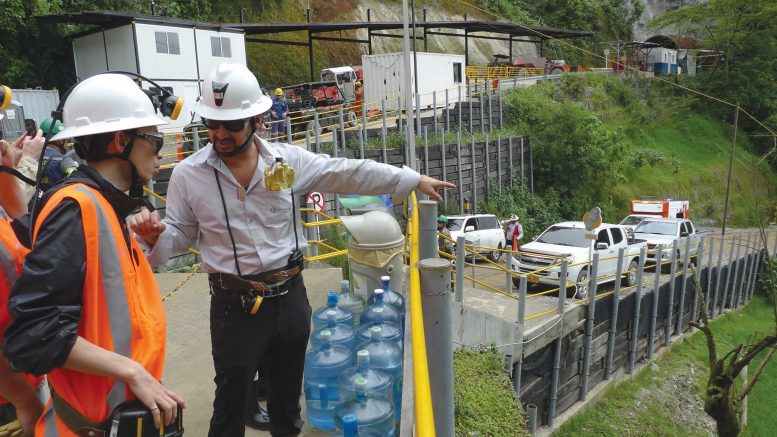
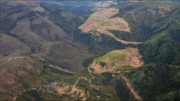
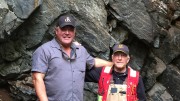
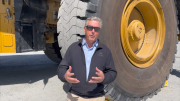
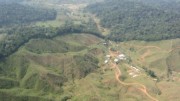
Be the first to comment on "Site visit: Continental Gold cruising to production at Buritica"